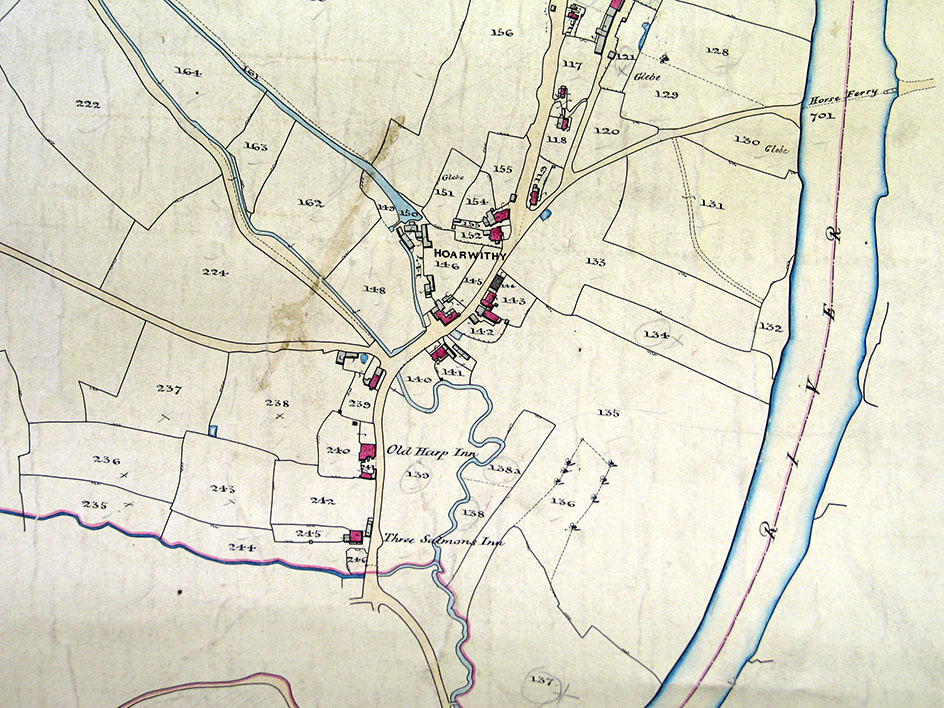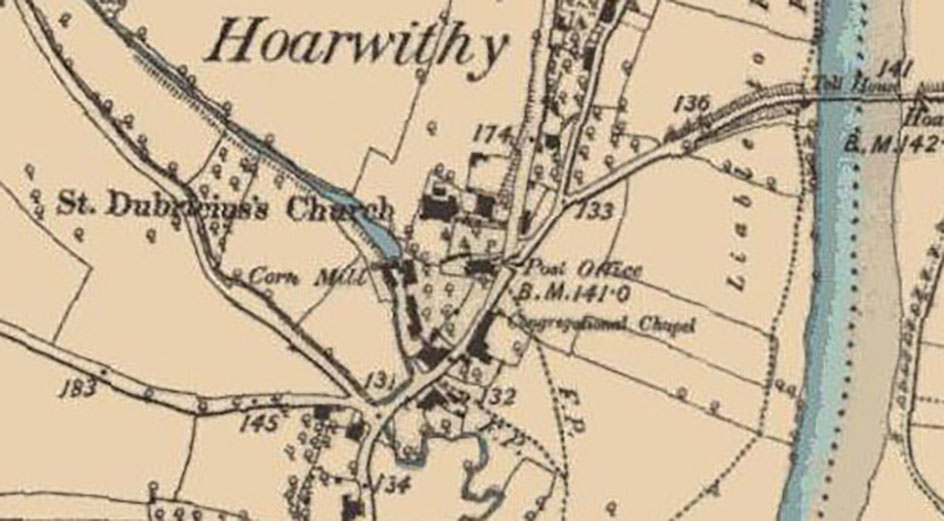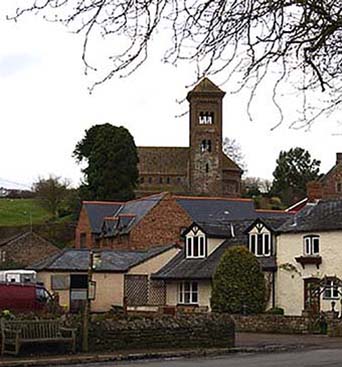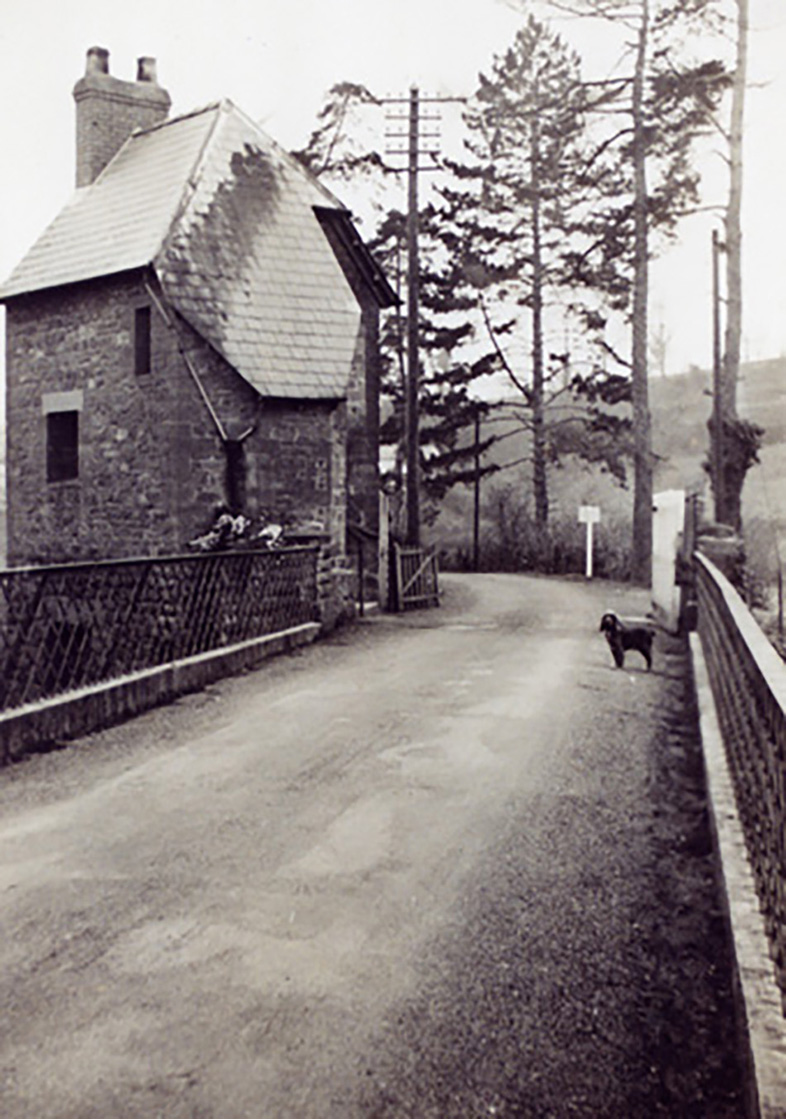Hoarwithy, first recorded in 1275, is the largest settlement in Hentland parish.
The centre of the village is on the Wriggle Brook, sited just above the Wye flood plain. Upstream and downstream Hoarwithy has the appearance of having originated as a squatter settlement occupying steep slopes above the Wye not easily utilised for agriculture.
A mill has been on the site for a long time, and was the latest one was still working until 1930.
In order to serve this growing community a simple new Anglican chapel was built at Hoarwithy in 1843.
The original church had no dedication and was simply known as the chapel of ease to Hentland, and was a simple rectangular stone structure structure.
Driving cattle through Hoarwithy. In the background is the 'Harp Temperance Hotel' proprietress Miss Fanny Pope, c1900. The Harp was certainly not a temperance hotel in earlier years when its customers would have included bargees on the Wye river trade. Bargemen were seasonal workers as the Wye was only navigable for part of the year. In 1767, Richard Probert of Hoarwithy, the son of a staymker, was a bargeman. |
 |
The riverside hamlet of Hoarwithy on the tithe map of 1840. The Wye at Hoarwithy is crossed by means of a horse ferry to the north east of the hamlet. Two pubs are shown - the Three Salmons Inn and the Old Harp Inn. Hoarwithy did a great deal of business in the river barge trade in this period and possessed five wharves. Another ford was apparently located a little way downstream, at Red Rail on the route between St Dubricius' at Hentland and the King's Caple peninsula. |
 |
| Hoarwithy on the First edition OS map. The horse ferry has been replaced by a bridge. The chapel is dedicated to St Dubricius. |
 |
|
Seddon was also responsible for the chancel stalls and Minton floor tiling at St Dubricius church at Whitchurch in Herefordshire. St Catherine's church at Hoarwithy was originally a simple chapel of ease to St Dubricius', Hentland. Seddon was commissioned to 'beautify the chapel'. The resulting striking Italianate church soars over the village. |

St Catherine's, Hoarwithy |
|
The ford at Hoarwithy was situated at a wide and shallow part of the river and crossed in a diagonal direction between the two banks. A ferry was recorded at this crossing in 1347. This ferry was a horse ferry in 1581,the greate passage Boote of Horewethie. In the late 18th century the ferryman was John Fidoe of Kings Caple, Fidoe the ferryman was lusty and strong, but by 1844 he had become weak; and Old Humphrey is not likely again to cross the stream in the big horse-boat piloted by Fidoe. The ford and ferry were stopped up under the terms of the Bridge Act of 1855, but are clearly marked on earlier maps. In 1856 Hoarwithy Bridge was built, connecting Hoarwithy with Kings Caple, and superceding the ferry. In 1871 the census records Ann Wilcox, a widow of 56, as the gatekeeper. A new, iron toll bridge was constructed in 1876. The table of tolls ranged from a farthing to 3d. This bridge was replaced in 1990 with the present one of concrete and steel. A Little downstream of Hoarwity is Red Rail |

Hoarwithy toll-bridge |